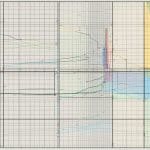Types Of Waves
Waves are all around us, from the ripples in a pond to the sound of a guitar string. They are a fundamental aspect of our world and understanding them is crucial to many areas of science and engineering. Waves can be broadly categorized into two types: mechanical and electromagnetic.

Mechanical waves require a medium to propagate, meaning they cannot travel through a vacuum. Examples of mechanical waves include sound waves, water waves, and seismic waves. Electromagnetic waves, on the other hand, do not require a medium and can travel through a vacuum. Examples of electromagnetic waves include radio waves, microwaves, and light waves.
Understanding the different types of waves and their properties is essential to many fields, including physics, engineering, and medicine. Waves are used in everything from communication technology to medical imaging. In this article, we will explore the fundamentals of wave physics, the different types of waves, and their practical applications.
Key Takeaways
- Waves can be categorized into two types: mechanical and electromagnetic.
- Understanding the properties of waves is crucial to many fields, including physics, engineering, and medicine.
- Waves are used in a wide range of practical applications, from communication technology to medical imaging.
Fundamentals of Wave Physics
Wave Characteristics
Waves are disturbances that propagate through a medium, transferring energy without transporting matter. There are different types of waves, including mechanical waves and electromagnetic waves. Mechanical waves require a medium to propagate, while electromagnetic waves can propagate through a vacuum.
All waves have certain characteristics that define their behavior. These include frequency, wavelength, speed, amplitude, and period. Frequency refers to the number of waves that pass a given point in a given time. Wavelength is the distance between two consecutive points in a wave that are in phase. Speed is the rate at which the wave propagates through the medium. Amplitude is the maximum displacement of a point on the wave from its equilibrium position. Period is the time it takes for one complete wave cycle to pass a given point.
Wave Propagation
The propagation of waves depends on the properties of the medium through which they are traveling. For mechanical waves, the speed of propagation depends on the properties of the medium, such as its density, elasticity, and viscosity. For electromagnetic waves, the speed of propagation is determined by the properties of the medium, such as its electric and magnetic properties.
In general, waves can propagate in different directions, including transverse and longitudinal. Transverse waves are those in which the particle motion is perpendicular to the direction of propagation. Longitudinal waves are those in which the particle motion is parallel to the direction of propagation.
In summary, waves are disturbances that propagate through a medium, transferring energy without transporting matter. They have different characteristics, including frequency, wavelength, speed, amplitude, and period. The propagation of waves depends on the properties of the medium through which they are traveling. Waves can propagate in different directions, including transverse and longitudinal.
Types of Mechanical Waves
Mechanical waves are waves that require a medium to propagate. They are categorized into three types: transverse waves, longitudinal waves, and surface waves. In this section, we will discuss each type of mechanical wave in detail.
Longitudinal Waves
A longitudinal wave is a type of mechanical wave in which the particles of the medium vibrate back and forth in the same direction as the wave travels. These waves are also known as compression waves because they produce compressions and rarefactions in the medium.
A common example of a longitudinal wave is sound waves. In a sound wave, the pressure variations in the medium produce compressions and rarefactions that propagate through the air. The speed of sound in air is approximately 343 m/s at room temperature.
Transverse Waves
A transverse wave is a type of mechanical wave in which the particles of the medium vibrate perpendicular to the direction of wave propagation. These waves are also known as shear waves because they produce shear stresses in the medium.
An example of a transverse wave is a wave on a string. When a string is plucked, it vibrates up and down, producing a transverse wave that propagates along the length of the string.
Surface Waves
Surface waves are a type of mechanical wave that propagate along the surface of a medium. These waves are a combination of longitudinal and transverse waves and are produced by the interaction of the two types of waves.
An example of a surface wave is a wave on the surface of water. When a stone is dropped into a pond, it produces ripples that propagate along the surface of the water. The crest of the wave represents the highest point of the wave, while the trough represents the lowest point.
In conclusion, mechanical waves are categorized into three types: transverse waves, longitudinal waves, and surface waves. Each type of wave has unique characteristics that make it suitable for different applications. Understanding the properties of these waves is essential for understanding how they propagate and interact with the environment.
Electromagnetic Waves and Their Properties
Electromagnetic waves are a type of wave that can travel through a vacuum, which means they don’t need a medium to propagate. They are also transverse waves, meaning that the electric and magnetic fields oscillate perpendicular to the direction of wave propagation. The properties of electromagnetic waves include their amplitude, wavelength, frequency, and speed.
Light and Its Spectrum
Visible light is a type of electromagnetic wave that we can see with our eyes. It has a wavelength range of 400-700 nanometers and is made up of different colors, which we perceive as a spectrum. The colors of the spectrum are red, orange, yellow, green, blue, indigo, and violet. The amplitude of visible light determines its brightness, while the frequency determines its color.
Radio Waves and Communication
Radio waves are a type of electromagnetic wave that are used for communication. They have a longer wavelength than visible light and can travel long distances without being absorbed by the atmosphere. Radio waves are used for broadcasting information and signals through the air, which are received by an antenna and then converted into sound or images. They are also used for communication between devices such as cell phones and radios.
In conclusion, electromagnetic waves are a fundamental part of our world and have many important properties. Light waves are responsible for our vision and the colors we see, while radio waves are used for communication and broadcasting. Understanding the properties and behavior of electromagnetic waves is crucial for many fields including physics, engineering, and telecommunications.
Wave Phenomena and Interactions
Interference and Diffraction
When two or more waves meet, they can interact with each other in different ways. One of the most common types of wave interaction is called interference. Interference occurs when two waves meet in such a way that their amplitudes add together. This can result in either constructive interference, where the waves reinforce each other, or destructive interference, where the waves cancel each other out.
Another type of wave interaction is diffraction. Diffraction occurs when waves bend around an obstacle or through an opening in a barrier. This can cause the waves to spread out and interfere with each other in new ways. Diffraction can be observed in many types of waves, including light waves, sound waves, and water waves.
Reflection and Refraction
When waves encounter a boundary between two different materials, they can be reflected or refracted. Reflection occurs when a wave bounces off a surface and changes direction. Refraction occurs when a wave passes through a boundary and changes direction due to a change in its speed. These phenomena can be observed in many types of waves, including light waves and sound waves.
Doppler Effect
The Doppler effect is a phenomenon that occurs when there is relative motion between a wave source and an observer. This can cause the frequency of the wave to appear to be higher or lower than it actually is. The Doppler effect can be observed in many types of waves, including sound waves and light waves. It is named after Christian Doppler, who first described the effect in 1842.
Standing waves are a special type of wave that occurs when two waves of the same frequency and amplitude interfere with each other. This can cause the wave to appear to be standing still, with certain points along the wave called nodes that do not move. Standing waves can be observed in many types of waves, including sound waves and light waves.
Overall, wave phenomena and interactions are important concepts in understanding the behavior of waves. By studying these phenomena, scientists and engineers can develop new technologies and better understand the world around us.
Practical Applications of Waves
Waves have various practical applications in different fields. In this section, we will discuss some of the most common applications of waves.
Medical and Industrial Uses
Longitudinal waves are used in medical and industrial applications. They are used in ultrasound imaging to create images of internal organs and tissues. Ultrasound waves are also used to break up kidney stones and other types of tissue. In the industrial sector, longitudinal waves are used in non-destructive testing to detect flaws in materials like metal and ceramic.
Electromagnetic waves are also used in medical applications. They are used in X-rays and MRI machines to create images of internal organs and tissues. Electromagnetic waves are also used in cancer treatment to destroy cancer cells.
Seismic Waves in Earth Sciences
Seismic waves are waves that are generated by earthquakes and other natural phenomena. These waves are used to study the Earth’s interior. Seismologists use seismic waves to determine the density and composition of the Earth’s interior. They also use seismic waves to study the Earth’s plate tectonics and the movement of the continents.
Seismic waves are also used to study the ocean floor. Ocean surface waves are generated by wind and are used to study the temperature and heat distribution of the ocean surface. Seismic waves are also used to study gravity waves and their effect on the ocean surface.
In conclusion, waves have many practical applications in different fields. They are used in medical and industrial applications, as well as in the study of the Earth’s interior and ocean surface.






